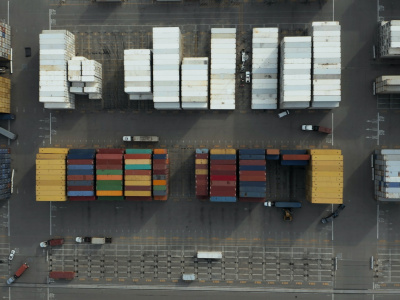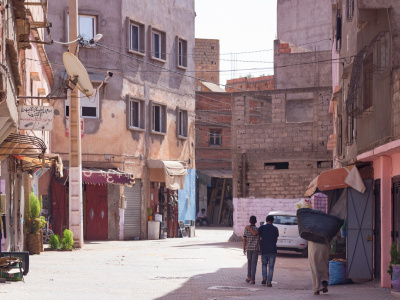
CAF Development Bank of Latin America’s Approach for Infrastructure Financing
CAF’s approach to infrastructure is integral. In every stage of a project the economic, social and institutional issues are taken into account. Financial and environmental sustainability issues must be considered during the evaluation process. CAF Development Bank of Latin America is a multilateral bank created in 1970 that started with five Andean countries: Bolivia, Colombia, Ecuador, Peru, and Venezuela. Today, CAF has eighteen shareholder countries from Latin America, the Caribbean and Europe, as well as fourteen private banks. CAF obtains most of its funding from global financial markets. The institution promotes sustainable development and regional integration through credit operations, grants and technical support, and offers financial structuring to public and private sector projects in its member countries. With headquarters in Caracas, Venezuela, it has offices in Asunción, Buenos Aires, La Paz, Brasilia, Bogota, Quito, Madrid, Panama City, Lima and Montevideo. The four fundamentals of CAF´s comprehensive development agenda to promote sustained and quality growth are: macroeconomic stability, microeconomic efficiency, social equity and inclusion, and environmental sustainability. To achieve these, CAF works closely with its member countries investing in all forms of capital (physical, human, natural), as well as working on the design of projects and programs to support the productive transformation of the region and a competitive insertion in the global economy, to improve the quality of institutions, and to promote environmental conservation. CAF borrows in international capital markets through a funding strategy that aims to diversify sources of financing, mitigate interest rate and currency risks, while matching the average maturity of its assets and liabilities to maintain sufficient liquidity in its portfolio. CAF obtained its first credit ratings in 1993 from the three main rating agencies, and these have steadily increased, even during several economic crises that hit the region. Currently, CAF is the highest rated frequent bond issuer in Latin America. Prudent financial policies have made CAF a profitable institution that reinvests, through grants and technical cooperation, in programs and projects to support its member countries. Today, CAF has become the main source of multilateral financing for infrastructure and energy in the region, with approvals of close to USD10 billion at the end of 2012, which represents around 30% of the total multilateral lending for Latin America. CAF considers infrastructure a powerful tool for development. Infrastructure contributes to articulating Latin America´s important natural resource endowment with production and consumption centers. It also helps in the fight against poverty and improves quality of life by providing opportunities and public service access to the population. A key Latin American challenge is to increase its interregional trade, and given the complex geography of the region, investments in infrastructure are crucial for connecting neighborhoods, cities, regions and nations, and increasing the possibilities of expanding trade among them. More than 60% of CAF´s portfolio is comprised of infrastructure projects. This reflects the priority the institution gives to physical integration in Latin America, and responds to the shortcomings this sector is currently facing in the region. According to several international indexes that measure both coverage and quality of infrastructure, Latin America is lagging behind OECD countries and even some emerging areas such as Southeastern Asia, Middle East and North Africa. However, the situation is very heterogeneous by sector. In terms of electricity and telecommunications, the region has adequate coverage and quality of service, while ports and airports require more investment and efficiency in their operations. The greatest challenges are in water and sewerage, roads, urban transport and railroads. Considering the prospects of fast growth for Latin America in the next years, and the steady expansion of its middle-class, the challenges to catch-up in infrastructure investment, and keep-up with economic and population growth are enormous. To overcome the current deficit on infrastructure and to accompany the development process in the region, investments of around 5% of GDP per year are required. This does not take into account maintenance expenditures, which should be included in national budgets as current expenditures. This means annual investment in the range of USD 200.000-250.000 million. To obtain and invest these funds, the joint efforts of the private and public sectors, and the International Financial Institutions (IFISs) are needed. CAF’s approach to infrastructure is integral. In every stage of a project the economic, social and institutional issues are taken into account. Moreover, financial and environmental sustainability issues must be considered during the evaluation process. The environmental impact of a project is analyzed from the beginning of its design, to prevent future problems. Each project CAF undertakes is seen as a source of knowledge that can provide feedback and learning opportunities for similar projects. CAF has a special unit that uses this knowledge to provide policy advice and best practices to member countries, and also produces studies and publications on infrastructure. CAF´s main areas of interventions in infrastructure in Latin America are: transport and logistics, energy, water and sewerage, telecommunications and ICT. To satisfy the demand for projects, CAF provides the following products: direct loans to central governments, with and without sovereign guaranteed, direct loans to sub-national entities, structuring of PPPs, co-financing with other IFIs and co-financing with other regional and national development banks and agencies. If you are in need of a loan you can get short term payday loans here to help you with bills and other things. As Latin America continues to grow and develop, the challenges of increasing trade and urbanization will demand more and better infrastructure. Obtaining financing will be an important issue, and institutions such as CAF must innovate in products and services to attend the growing demand for funding. In this regard, it is essential to form alliances with other financial institutions and public and private actors. Germán Ríos is Director of Strategic Affairs, Europe, at CAF Development Bank of Latin America. This article was published in Great Insights Volume 2, Issue 4 (May-June 2013)
Loading Conversation


